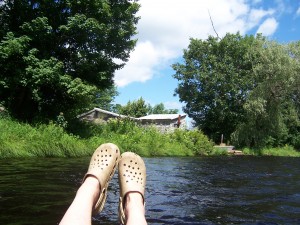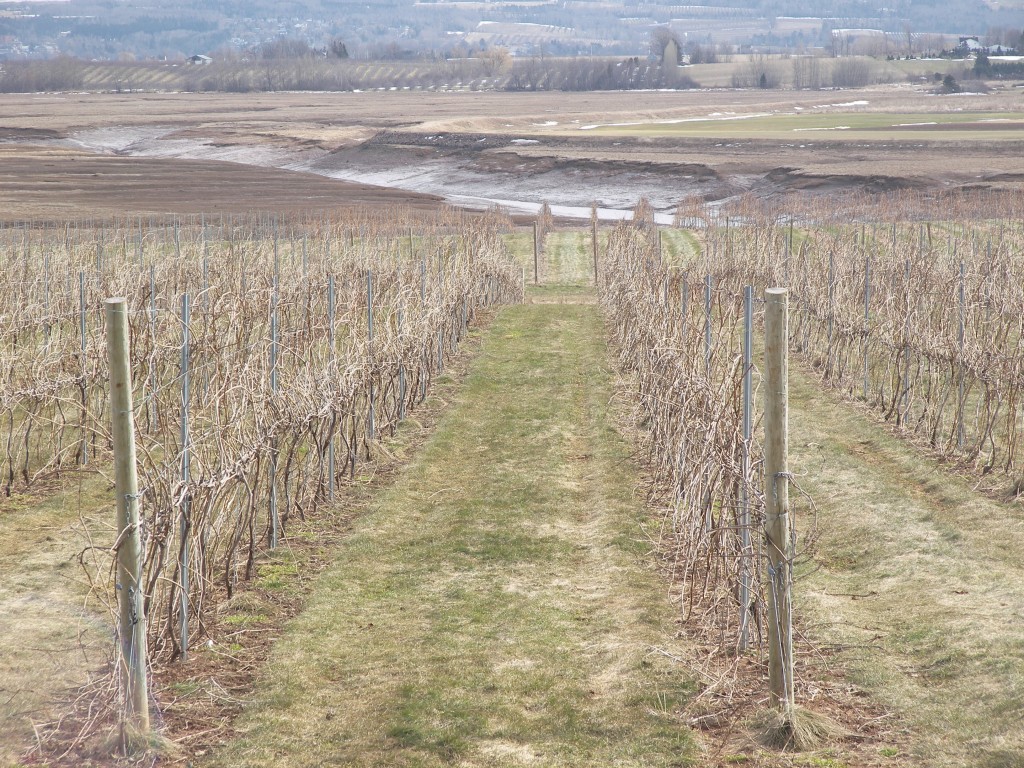I always thought of Staghorn Sumac as a bush, not a tree – until we moved to our present house, where two gorgeous Staghorn Sumac trees grace our yard. They are particularly beautiful in autumn.

The house is about 23 years old, and I presume the sumacs are around the same age.
Sumacs generally sucker like crazy: shoots come up from their roots and will grow as big as competition allows. But apparently, if you mow around the tree, allowing only one sumac stem to grow, it will grow to the height of a small tree, about 18′ (5.5m) tall. These trees still grow suckers, but they tend to appear some distance from the tree. Presumably they don’t grow as readily on older roots.
The leaves form an umbrella to catch the light. We have to prune them regularly along the driveway on their southeast side where the branches have grown too low. Branches on the inside of the umbrella die off and break off easily.
The root system must be fairly weak, as both trees lean away from the direction of the strongest winds. One of them (not the one in the picture) reportedly toppled over in Hurricane Juan. The previous owner pulled it upright with his ATV. It still stands, but since it is getting harder to mow under it on one side, it must be gradually leaning more and more, like the Tower of Pisa before they fixed it.
 I have successfully removed two other sumacs on the property by sawing them down and removing any shoots that appeared for a couple of years. So they are not too persistent.
I have successfully removed two other sumacs on the property by sawing them down and removing any shoots that appeared for a couple of years. So they are not too persistent.
Our sumacs are great climbing trees for young children, as the branches are low. Birds are also drawn to them for the seeds that grow in attractive fuzzy red spikes. The spikes stay on the tree all winter, making the sumac a most attractive tree year-round.













